An F1-loving Michelin star chef's tips for experiencing the best of Emilia-Romagna
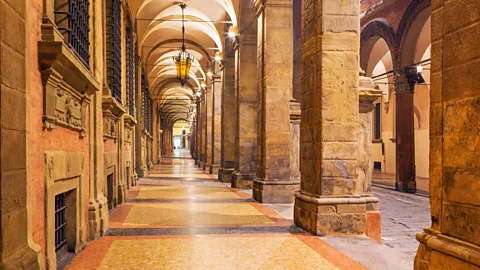 Alamy
AlamyCelebrity chef Massimo Bottura grew up watching the Emilia-Romagna Grand Prix. Now a collaborator with Ferrari, he shares his top ways to enjoy the region during F1 and beyond.
Italy's Emilia-Romagna region is home to the medieval cultural and political centres of Bologna, Parma and Modena; its ochre hills and postcard villages dotted with stone castles, a nod to its Ducal past. But its greatest claim to fame is its status as Italy's symbolic culinary capital and the birthplace of some of its most iconic gastronomic products (Parmigiano Reggiano cheese and pasta alla Bolognese, anyone?).
Coincidentally (or not), it's also the birthplace of Michelin-starred chef Massimo Bottura – the father of contemporary Italian cooking. The BBC recently tapped him for insight into this spectacular, yet seldom-touristed Italian region. "Emilia-Romagna is a very unexpected jewel," says Bottura. "You arrive and you don't expect anything because it's not Venice, Florence… whatever. This is not Tuscany. This is Emilia-Romagna."
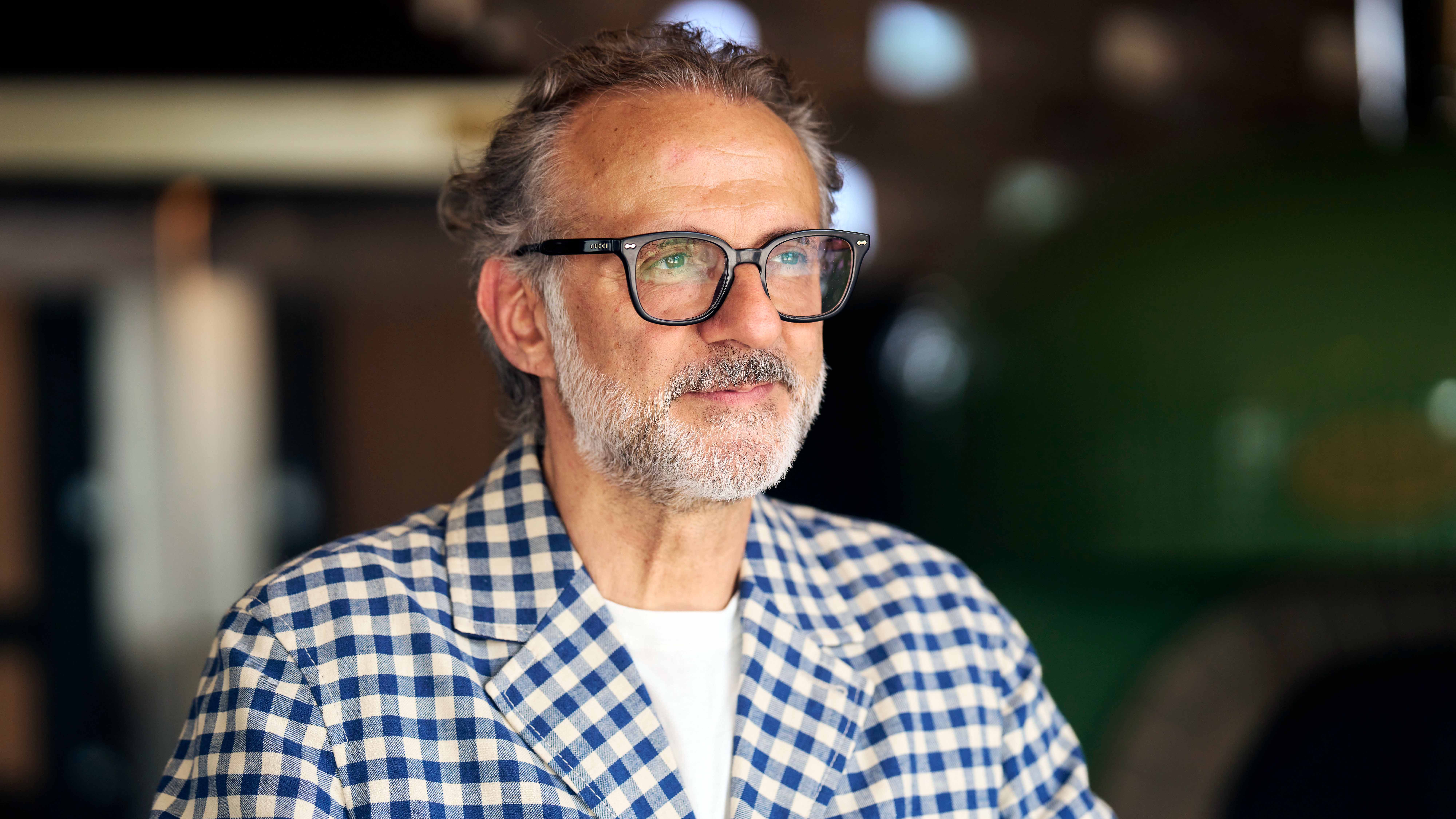
The SpeciaList
Modena-born three Michelin-starred chef Massimo Bottura has been fascinated by F1 since watching the race zoom through Imola each year as a boy. He is the mastermind behind Osteria Francescana, Franceschetta58, Al Gatto Verde, Francescana at Maria Luigia, Gucci Osteria and Enzo Ferrari's culinary endeavour, Ristorante Cavallino. He is also the co-author of 2024's Slow Food, Fast Cars: Casa Maria Luigia – Stories and Recipes, a book celebrating the twin excellences of his home region. His groundbreaking modern Modenese cuisine is revered worldwide.
Emilia-Romagna, which incorporates the historical regions of Emilia and Romagna, gets its name from the Aemilian Way; the Ancient Roman road connecting the cities of Piacenza and Rimini. "You are on the coast of the Riviera and you have the land of Fellini and [the film] 8 ½," says Bottura. "On the other side, you have a beautiful valley and south of Emilia, you have the mountains, and there's beautiful ski resorts. In a couple of hours, you have everything, you know?"
Bottura's pride in his home region is only bolstered by its role in Formula 1 racing; the town of Imola is the site of the Emilia-Romagna Grand Prix.
"That's the best moment!" he says "Formula One for us is very special. We feel part of this event that's all about fast cars. Everything is bubbling because everyone is so excited."
Bottura's fast car love runs deep. "When I was a kid, there was a racing track in downtown Modena," he says. "When you grow up in a land like this and you were six and you were there with your brothers, watching these guys, it's something that is gonna stay under your skin forever."
Bottura's fascination with F1 has led to a friendship and professional collaboration with Enzo Ferrari, for whom he runs Ristorante Cavallino in the town of Maranello. "I'm extremely involved with the drivers, the whole Scuderia Corsa," he says. "Especially because we always hope that Ferrari is going to win. So it's a big, big, big party. And we are like, 'Yeah, let's do it! Let's race!'"
Here are chef Massimo Bottura's favourite ways to experience Emilia-Romagna, during F1 season and beyond.
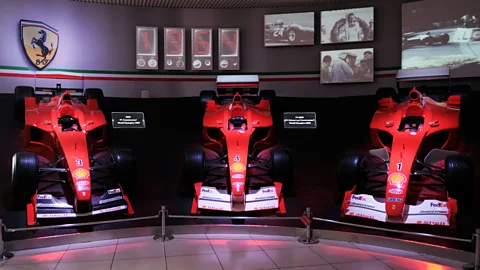 Alamy
Alamy1. Best for true F1 fans: Maranello and Emilia-Romagna's car museums
The most cursory guide to Emilia-Romagna will send visitors straight to Bologna's historic quarter. But Bottura's essential first stop is Maranello: the home of Ferrari, the Scuderia Ferrari racing team… and Motorsport Maranello's Ferrari test drive track.
"You reserve a 500-horsepower, 600-horsepower, 700-horsepower car," says Bottura. "You race for a couple of laps and enjoy yourself and feel confident with speed."
At Motorsport Maranello, aspiring speed demons can drive a Ferrari or a Lamborghini on the test track, the narrow streets of Maranello or even through the winding mountain roads of the Modena Apennines.
Bottura also loves the region's many car museums, like the Ferrari Museum a few paces away from the track. "But also the Ferrari museum in Modena," says Bottura. "They're very different. [The museum in] Maranello is more racing. Modena is more elegant, beautiful old cars."
In Modena, Maserati lovers can also visit the Umberto Panini Motor Museum. "That is one of the most important Maserati collections with a lot of Formula One from the '40s, the '50s," says Bottura. "It's beautiful."
The high-speed madness continues in the village of Borgo Panigale. "[It's] the place for Ducati," says Bottura. "So stop and check the most beautiful history of motorcycles at the Ducati Museum and you really understand what Emilia-Romagna is. It's a land obsessed about quality. We wake up half an hour before the others and we go to bed one hour after because in the meantime, we do what we love to do: create history, you know?"
Website: https://www.motorsportmaranello.com
Address: Via Dino Ferrari, 61 – 41053 Maranello MO
Phone: +39 0536 941779
Instagram: @motorsportmaranello
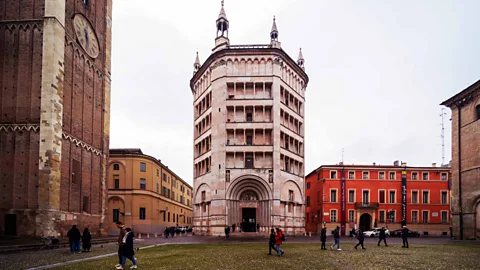 Alamy
Alamy2. Best gateway to the region: Parma
"Emilia is a very social place," says Bottura. "We love the word welcome – benvenuti. But welcome in a real way. We love people. We are not used to tourists. That's why we are so welcoming."
For a proper welcome to Emilia-Romagna, Bottura suggests starting in the medieval city of Parma.
"Parma is a beautiful, charming place," he says. "Full of history and a little bit of snobbiness that I love and amazing trattorie (homestyle restaurants), but also the many theatres of opera and classic music."
The birthplace of legendary opera composer Giuseppe Verdi, Parma is the second-most populous city in the region after Bologna. The beauty of its Cathedral Square, with its 13th-Century terracotta and stone Cathedral belltower, pink marble octagonal San Giovanni Battista Baptistery and 11th-Century Palazzo Vescovile – plus its rich cultural events calendar of concerts and art exhibitions make it a must visit any time of year. "I really enjoy Parma," says Bottura. "It's the beauty of the architecture, the walls, it's amazing."
 Alamy
Alamy3. Best cultural experiences: Modena museums and Bologna art fairs
Bottura's passion for art is well documented – his luxury guesthouse Casa Maria Luigia on Modena's outskirts practically doubles as an interactive mixed media installation. He wastes no time pointing out the region's best museums, mostly located in his beloved hometown of Modena; a city renowned for its exquisite Romanesque architecture, also dubbed the Car Capital of Italy. "One of the most important galleries of contemporary art in Italy is in Modena," he says. "It's called Galleria Mazzoli and it was the first gallery in the world to host a solo show by Jean-Michel Basquiat. So, imagine how important it is."
Galleria Mazzoli is just a short walk away from Bottura's next pick: the Palazzo Ducale di Modena, housed in a majestic Baroque building. Once the home of the Estes Ducal Court, the structure is now the headquarters of the Military Academy of Modena but draws visitors for its stunning 17th-Century architectural features, like the Cortile d'Onore (Courtyard of Honour) and gilded Salottino d'Oro ("Golden Sitting Room"). And moving towards Bologna, "You have the Museo Morandi," says Bottura. "[Giorgio] Morandi is a super master; one of the most important artists of the 20th Century in Italy. Such a beautiful museum."
Also in Bologna is the annual Artefiera, typically held at the end of January. "A lot of galleries from Bologna with classic, classic, modern art," says Bottura. "Bologna has the most important art fair in Italy, so art is part of our DNA."
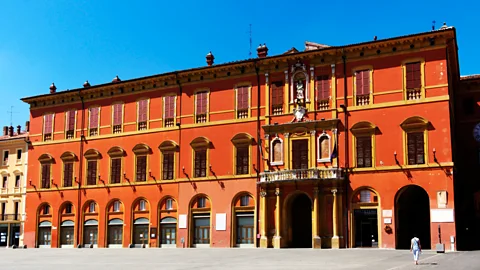 Alamy
Alamy4. Best base for exploring the region: Imola
Visitors to Emilia-Romagna often base themselves in Bologna – the region's capital, home to the University of Bologna; founded in 1088, the oldest university in the world. A constant buzz of people filters through the splendid Piazza Maggiore and Unesco-listed porticoes on their way to savour art galleries and fashionable boutiques.
"Bologna is a very nice place," says Bottura. "But there are, like, a million people living there. For shopping, it's amazing. But for a more intimate experience I would stay in Imola."
Imola, the site of the Emilia-Romagna Grand Prix and the Autodromo Enzo e Dino Ferrari track, is a pocket-sized town on the river Santerno, studded with Roman ruins, stately mansions and Romanesque castles. Situated at the far eastern edge of Emilia-Romagna, not only is it the seat of all the Grand Prix excitement, but it's also extremely convenient for day trips to Bologna, Parma, Ferrara and Modena, making it an excellent and charming base for visits at any time of year.
"Imola is so beautiful," says Bottura. "It's a small town, but with incredible history. The walls are still there. There are amazing buildings but also beautiful trattorias." His pick of Imola eateries is the two-Michelin-starred Ristorante San Domenico, helmed by chef Massimiliano Mascia. "It's one of the historic restaurants," he says. "They made a history of contemporary Italian cuisine."
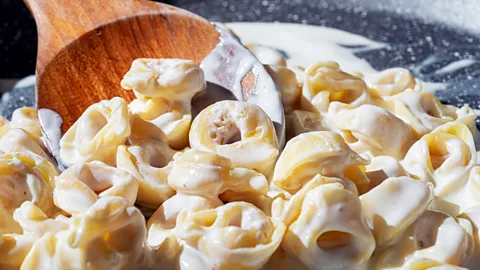 Alamy
Alamy5. Best things to eat and drink: Mortadella, Parmigiano cheese and tortellini
Utter the name Emilia-Romagna and the words prosciutto di Parma, Parmigiano Reggiano and Bolognese are never far behind; DOP-protected foods that have not only defined the region but become symbolic of Italian cuisine as a whole. Mortadella and "stuffed" pasta dishes like tortellini and lasagna alla Bolognese are deeply associated with Bologna, while earthy-sweet balsamic vinegar is native to Modena. In Parma, the sight of huge wheels of fragrant Parmigiano Reggiano cheese lining the walls of historic cheese factories can weaken the strongest resolve.
Tortellini forever
Of all of his region's classic foods, Bottura is most passionate about tortellini. Straw-yellow dough wrapped around a savoury filling of mortadella, prosciutto, lonza and Parmigiano, tortellini are classically served in panna (cream) or brodo (broth). Bottura prepares them in various incarnations at his restaurants, and along with his wife and business partner, the philanthropist and art expert Lara Gilmore, operates Tortellante in Modena, where autistic children are taught by grandmothers to make tortellini. "If you don't believe in God, you can always believe in tortellini," he says.
Wine tastings and tours of Parmigiano and balsamic vinegar factories are a non-negotiable of any visit, as are lazy, four-hour long meals at classic trattorias, from antipasto to amaro digestifs. When asked what to order, Bottura goes straight for the deep cuts.
"The super classic are the gnocco fritto," he says. "It's fried dough with sliced mortadella or pancetta on top, so it's melting on top of the dough, and then you eat it. Then you have tagliatelle with ragù. Some people worldwide call it Bolognese but actually the Modenese [ragù] is much better." He shrugs, "Yeah, this is my opinion."
Bottura also cites the humble bollito misto (boiled meat with various sauces) and the Romagna area's classic piadina flatbread. "That's a very good dough that we roll and make very thin," he says. "And we cook it on top of the fire and we fill it with different things like squacquerone – that's a classic, fresh cheese from Romagna – and arugula; so sweetness and bitterness together. It's incredible."
All washed down with Bottura's favourite bubbly red wine, Lambrusco. "It's the most important wine in Emilia-Romagna," he says. "Bubbly, fresh; super easy to drink as an aperitivo but also to match with some bollito misto."
 Alamy
Alamy6. Best outdoor experience: head to the hills
Emilia-Romagna is just as famous for beautiful yellow and green hills as it is for exquisite medieval cities; its rolling countryside perfect for thrilling hikes and bike rides.
But Bottura, ever the speed demon, suggests kicking things up a notch. "You're in Emilia-Romagna and you have a motorcycle? Come with the motorcycle," he says. "Go on the Apennines up in the hills as I did with Stanley Tucci and CNN. You get the best Parmigiano Reggiano and ride your bike or your convertible in spring and summertime… it's the most beautiful ride you can get." Bottura's favourite scenic stretch is the Parco del Delta del Po; a lush national park sprawling between the provinces of Ferrara and Ravenna, encompassing wetlands and an immense variety of wildlife, including 350 species of birds. "It's close to the Po River in Romagna where the estuary is," he says. "It's one of the most beautiful, enchanting places in the world."
Website: https://www.parcodeltapo.it/it/
Address: Piazza Giacomo Matteotti, 1, 45014 Porto Viro RO, Italy
Phone: +390426372202
Instagram: @parcodeltadelpo
BBC Travel's The SpeciaList is a series of guides to popular and emerging destinations around the world, as seen through the eyes of local experts and tastemakers.
--
If you liked this story, sign up for The Essential List newsletter – a handpicked selection of features, videos and can't-miss news, delivered to your inbox twice a week.
